I stole the “walk-off” line. Bill James has annually published his Bill James Handbook since 2003, but the one for the 2024 season is his last. Hence, the “Walk-Off Edition.”
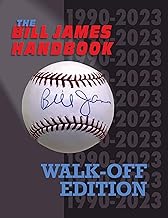
In mid-September, James also discontinued his blog (Bill James Online), explaining that he was neither sick nor retiring but wanted more time to devote to other projects.
Hot Stove is only walking-off for 2023. Will be back in 2024.
The Kansas City Royals: Who thought there would be big Royals news at this time of year? Consider…
Lots of news on a (potential) new downtown (or elsewhere) stadium. Stay tuned.
Free agent signings exceeding $100,000,000! Sportswriters took note. The headline for Ken Rosenthal’s article in The Athletic was “Surprising developments spur Royals’ relative free agent spending spree.” CBS Sports began its coverage with “No one will mistake them for the Los Angeles Dodgers, but the Kansas City Royals have been one of the offseason’s most active teams.” On Joe Posnanski’s blog, Joe cautioned that some of the moves may not work out, but hey, “Sure, it’s a dream. But what is baseball without dreams.”
So, optimism is in the air. It helps that the Royals are in the AL Central.
And don’t forget there was some good news coming out of the 2023 season…
From stats guru and optimist Jeff Nelson: “After winning only six of their first 44 series through September 3, shockingly our boys in blue won six of the last eight series.”
Bobby Witt was a marvel and finished seventh in the MVP race.
The Royals came in second in “Rhino WAR” based on the weight of the 26-man opening day roster (per Jay Cuda on Twixter). I have not checked the weight of the new free agents, but maybe the Royals can overtake the Brewers in 2024.

Roberto Clemente – Geddy Lee and Tim Sear: Last week’s Hot Stove featured the auction of baseball memorabilia from rock star Geddy Lee’s collection. One of the items sold was this baseball signed by Roberto Clemente…
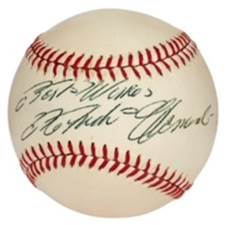
The winning bid was $88,200. I thought that number would be of interest to my law partner Tim Sear who is fanatical about Roberto Clemente (or as Tim calls him, the “Great One”). I knew that Tim’s personal Clemente collection included a ball signed by the Great One. The Roberto Clemente Museum in Pittsburgh has agreed to accept Tim’s ball and have it placed on permanent display.

After I sent the auction info to Tim, he excitedly got back to me, “My ball is in at least as good condition – if not better.” Here it is (my iPhone shot not as professional as the auction photo above):
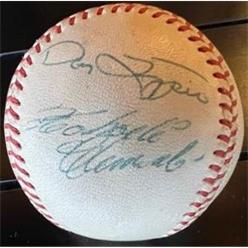
Tim was not necessarily looking to change his mind on his donation to the museum, but his curiosity prompted him to check with an auction house on the value of his ball. Tim also provided some provenance background on authenticity of the signatures. Below is the beginning of a 1968 letter from Joe L. Brown, GM of the Pirates, inviting Stanley Sear and his 10-year-old son Timothy to meet with Brown at a Pirates game at Wrigley:


Tim’s dad was a Pirates fan, and the family made annual trips from Iowa to Chicago to see the Pirates play the Cubs at Wrigley. I’ll let Tim tell what happened:
“Between games of the doubleheader between the Pittsburgh Pirates and Chicago Cubs on July 7, 1968, I was taken into the Wrigley Field Visitors’ Clubhouse by Bob Rice, Pirates Traveling Secretary. At the end of the first game of the doubleheader (which ended with a walk-off home run by Cub Jose Arcia—the only home run of his career), Mr. Rice took me down onto the field, into the Pirates’ dugout, out of the back of the Pirates’ dugout and up the stairs to the Visitors’ Clubhouse. Mr. Rice handed me a brand-new National League baseball and a blue ball point pen and told me to get some autographs. I headed immediately to Roberto Clemente and Maury Wills—but also got the autographs of Vernon Law—Pirates pitching coach at the time and star Pirates pitcher in the late 50s and early 60s—and coach Don Leppert (in retrospect—I should have shaken the hands of coaches Law and Leppert—instead of getting their autographs—but I was just 10 years old and having the time of my life!).”
As it turns out, Tim’s ball likely has a five-figure value, but in a much lower range than the one sold at the Geddy Lee auction. At least three reasons for this: (i) Tim’s is not a “single signature” ball, which detracts from its value if the other signers are not Hall of Famers, (ii) one of the other signers is on the same panel as the Great One, and (iii) the star power of Geddy Lee attracted a high number of bidders, not likely to be duplicated for Tim.
Tim does not feel bad about the lower value. He would much prefer to see the ball in the museum than in a private collection. He will make his donation to the museum during the next Royals series in Pittsburgh (September 13-15, 2024). The cool thing – September 15 is Roberto Clemente Day at PNC Park.
Willie Wilson and Autographs: Willie Wilson acknowledges that he was once the “toughest autograph to get in baseball.” He didn’t like signing autographs because he never thought he was better than anyone else. He was also leery of the “autograph industry.” The clincher for him was when he was hounded by an autograph seeker who almost knocked over Willie’s wife and their new baby.
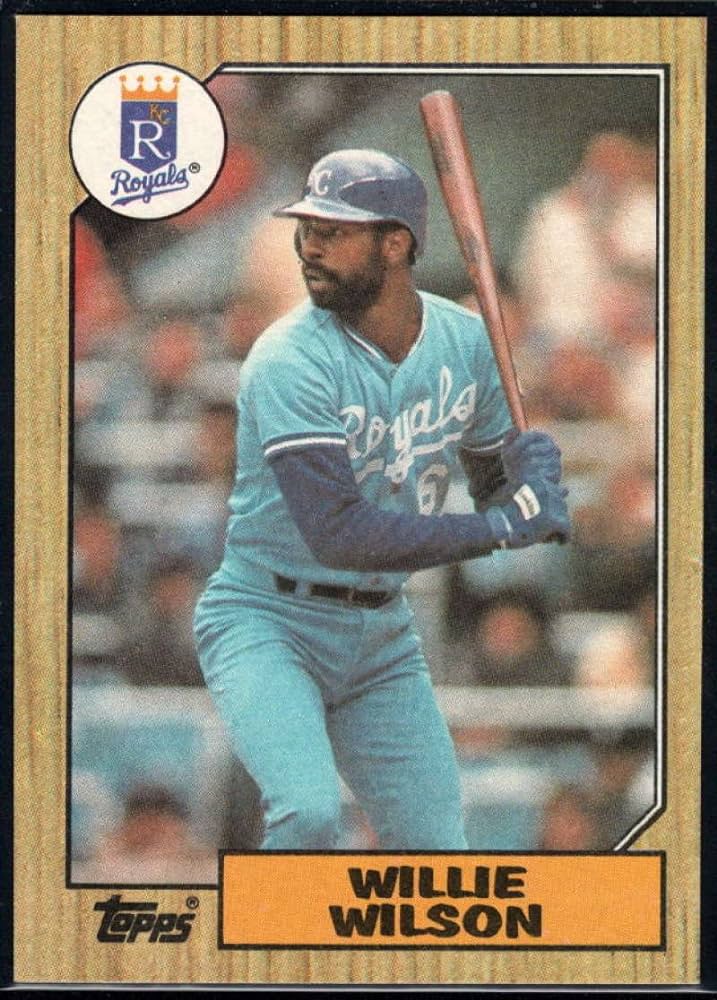
Willie changed his mind after a few years and, speaking at a college conference, offered the lesson he had learned: Don’t let one guy determine how you treat everyone else (video here; thanks to Pat Franke for sending this clip).
Rita and I are beneficiaries of Willie’s change of heart. Pat Titterington and Cheryl Dillard were at spring training in 2019, and they chatted with Willie, John Mayberry and Dennis Leonard at the stadium. They asked the former players to sign a ball for the Hot Stove folks. The players did, and Willie went the extra mile:
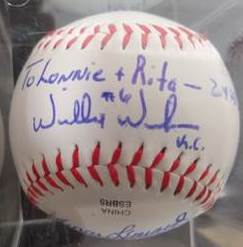
The ball is not for sale.
Bill Wakefield and Autographs: Bill Wakefield (Pem-Day 1959) signed with the Cardinals in 1960 and got an August workout with the team in St. Louis. In the clubhouse, Stan Musial put his arm around Bill, saying “Welcome to the Cardinals and…get yourself some shower shoes…and have some pride…sign your autograph so everyone can read it.”
Bill still signs a lot of autographs. He had a very good year with the Mets in 1964, but that was his only major league season. Still, he went deep enough into spring training that Topps cards were issued for him in 1964, 1965 and 1966. Bill is contacted 10 to 15 times a month by card collectors trying to complete signed sets for those years.
He is happy to oblige. Like most of us, his signature has deteriorated over the years, but he heeds Stan Musial’s advice and reverts to his 1964 penmanship for current requests. As he joked in response to an autograph-seeker:
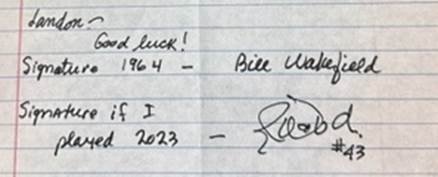
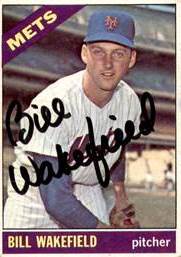
George Brett Documentary: On December 7, MLB Network released “Brett,” a documentary about Hall of Famer George Brett. It’s a lot of fun and a must-see for Royals fans.
As promised by MLB network, the film features “unfiltered and raw interviews” with George. Others interviewed in the film include George’s wife Leslie and son Jackson, many fellow players (Royals and opponents), Denny Matthews and Joe Posnanski.
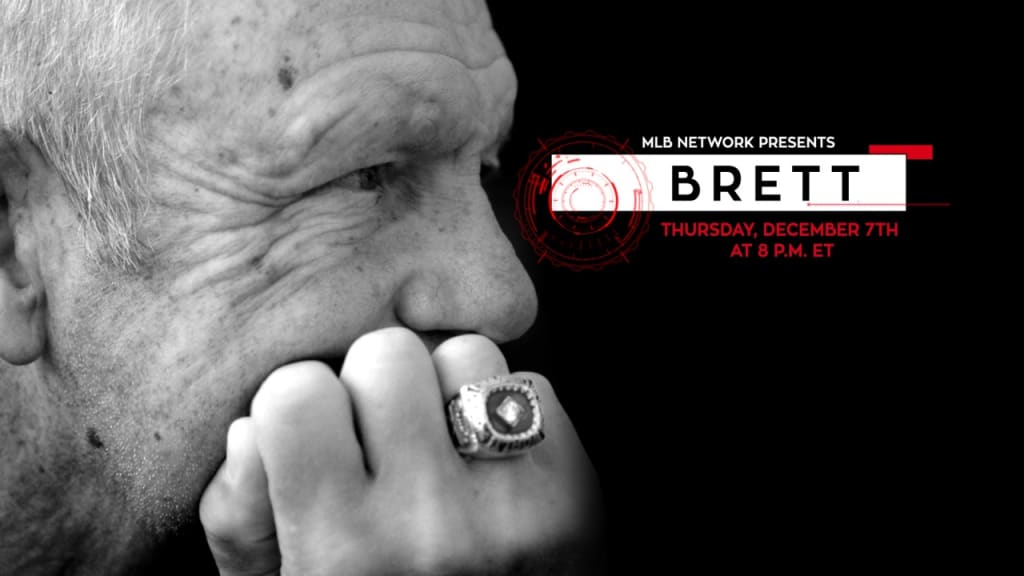
The documentary hits the high points of George’s 21-year career (the quest for .400, post-season heroics, hemorrhoids, Pine Tar, etc.). There is a long segment on hit #3,000 in Anaheim (9/30/92) and the follow-up ceremony at Kauffman Stadium (10/3/92). I’m featuring screen shots from the ceremony because they include two friends of Hot Stove…
Congressman Emanuel Cleaver, then Mayor of Kansas City.
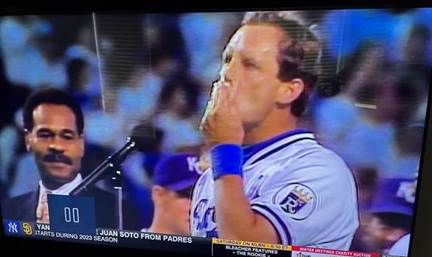
Marsha Murphy (behind Ewing Kauffman), then Jackson County Executive.

MLB chose not to show the embarrassing part of Brett’s 3,000th hit. His hit was a single, and his teammates swarmed out to first base to congratulate him (this part is in the film). When the game got underway again, George was picked off first base (this part is not in the film, but you can see it here).
[Van Horn Trivia: When I checked the KC Star archives for details about the ceremony, the main article was written by Gib Twyman and Jeffrey Flanagan. I knew Gib from Van Horn High School where he was two years behind me. For most of his journalism career, Gib was a sportswriter at the Independence Examiner and Kansas City Star. He covered the Olympics in L.A., Calgary and Barcelona, eight World Series, five Super Bowls, eight U.S. Open tennis tournaments, three Masters and three U.S. Open golf tournaments. Gib died way too young at age 57 in 2001. Jim Fitzpatrick (RIP 2023) wrote a column in JimmyCsays in 2013 about the long tradition of excellence of the sports section of the Kansas City Star. One of Jim’s examples was Gib Twyman who “was another outstanding columnist. A born-again Christian, he was genuinely empathetic with people who were experiencing difficulties, and he frequently digressed from the sports scene. He wrote several extremely touching columns.”]
Happy Holidays!: Hanukkah season has just ended, but here is a reminder from the Geddy Lee auction:
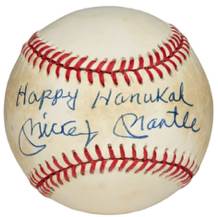
Coming up next…
Tomorrow, December 23, Festivus (for the non-Seinfeld folks, see this clip).

Monday, December 25, Christmas. Chiefs v. Raiders at noon.
Tuesday, December 26, the beginning of Kwanzaa.
Sunday, December 31, New Year’s Eve Day. Chiefs v. Bengals at 3:25.
And this from my long-time secretary Nancy Gaba who remembers my red-penned document changes.
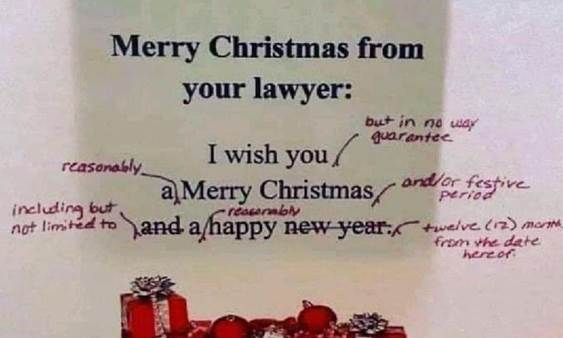
Looking for some last-minute holiday gifts? Head over to Rainy Day Books. Three of my favorite books this year came from author events sponsored by Rainy Day.

Lonnie’s Jukebox – “Not Fade Away” Edition: Lonnie’s Jukebox in Hot Stove #237 featured the Rolling Stones. In #240, it was Geddy Lee and his band Rush. Trivia Question: What was the title of the first U.S. single for these two Rock and Roll Hall of Fame bands? Same answer for both: “Not Fade Away,” covers of the original…
“Not Fade Away” by Buddy Holly and the Crickets (1957). Buddy Holly is on my rock ‘n’ roll Mount Rushmore along with Little Richard, Fats Domino and Chuck Berry. Writing credit for the song is listed as Charles Hardin (Buddy Holly) and Norman Petty (Holly’s producer, not likely a true contributor to the song). I have two versions in my 45-rpm record collection, the single and this mini-album (four songs).
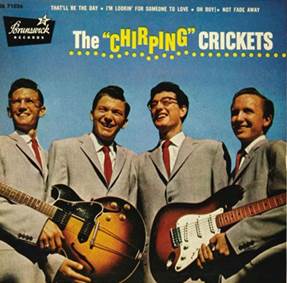
On January 31, 1959, Buddy Holly performed in Duluth, Minnesota, on the Winter Dance Party Tour.
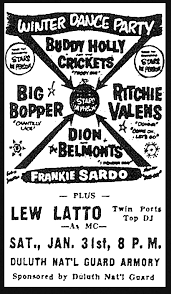
Traveling 75 miles from Hibbing to see the show, 17-year-old Robert Zimmerman would later recall about Holly, “He was mesmerizing. I watched his face, his hands, the way he tapped his foot, his big black glasses, the eyes behind the glasses, the way he held his guitar, the way he stood, his neat suit…Then, out of the blue, the most uncanny thing happened. He looked me right straight dead in the eye, and he transmitted something. Something I didn’t know what. And it gave me the chills.”
Three days later, after performing in Clear Lake, Iowa, Buddy Holly died in a plane crash. Months later, budding singer/songwriter Robert Zimmerman started performing under the name Bob Dylan.
“Not Fade Away” by Bob Dylan (live in Lisbon in 2023). On his current Rough and Rowdy Ways Tour, Dylan’s setlists mostly include songs from his studio albums. But he occasionally strays, and the most played song when he does so is “Not Fade Away.”
Dylan was not the only future rock star mesmerized by Buddy Holly. Keith Richards: “Mick had been singing with some rock and roll bands, doing Buddy Holly…He was in England as solid as Elvis…By about ’58, it was either Elvis or him. It was split into two camps.” Mick Jagger: “To English people he was an enormous inspiration. Therein lies the difference because he was a songwriter, which Elvis wasn’t. And he wrote very simple songs, sort of lesson one in songwriting. Great songs, which had simple changes and nice melodies…He was a beautiful writer.”
For their first single to be released in the United States (March 6, 1964), the Rolling Stones chose…
“Not Fade Away” by the Rolling Stones (1964). The Beatles and Stones could not be heard on the BBC in 1964 and commercial stations were not then allowed in England. So, ships set up anchor outside territorial waters to beam rock ‘n’ roll to the mainland. One of the best known “pirate ships” was the Caroline, and “Radio Caroline” made its first broadcast on March 28, 1964. The first record played was “Not Fade Away” by the Stones. A fun movie about this era is Pirate Radio (2009; Philip Seymour Hoffman/Bill Nighy; trailer here).
[Rolling Stones Trivia: On April 28, 2024, the Rolling Stones kick off a new tour. Mick and Keith are 80 and Ronnie Wood is 76. Fun fact: The tour is sponsored by AARP (click here). My law partner Jim Polsinelli recently turned 80 and quipped, “60 is the new 50, 70 is the new 60, and 80 is…still 80.” Not for the Stones.]
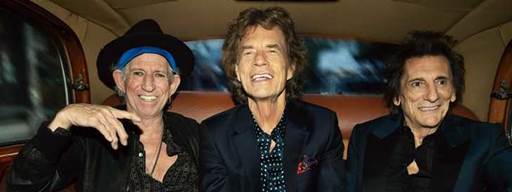
The Beatles were likewise influenced by Buddy Holly and felt more aligned with him than Elvis because Buddy was a songwriter. When the band was looking for a name, John Lennon said he was “just thinking what a good name the Crickets [Buddy Holly’s band] would be for an English group, when the idea of beetles came into my head.” John also modified the spelling (for the beat of the music). In 1964, the Beatles released a single covering Buddy’s “Words of Love.” The video is a treat, and at 0:55, there is a virtual Buddy Holly in his signature black glasses (click here).
“Not Fade Away” by the Grateful Dead. From 1969 to 1996, the Grateful Dead played “Not Fade Away” at over 500 of their concerts.
“Bo Diddley” by Bo Diddley (1955). There would be no “Not Fade Away” without Bo Diddley. Buddy Holly incorporated the “Bo Diddley Beat” widely used by rock ‘n’ roll bands. I still have my copy of Bo Diddley’s debut album.
![Front Standard. Bo Diddley [1958] [LP] - VINYL.](https://lonniesjukebox.com/wp-content/uploads/2024/01/front-standard-bo-diddley-1958-lp-vinyl-.jpeg)
“Not Fade Away” by Bruce Springsteen and the E-Street Band. Springsteen has spoken of Holly’s influence and has often played “Not Fade Away” in concerts.
“Not Fade Away” by Sheryl Crow (2007). Released 50 years after Buddy’s 1957 original. Crow’s single was initially released on iTunes with all proceeds going to breast cancer research in a joint promotion with Revlon. Clips of the song were used in an ad for Revlon Colorist (hair dye that did not fade away). The ad debuted during Super Bowl XLI in 2007 (video here).
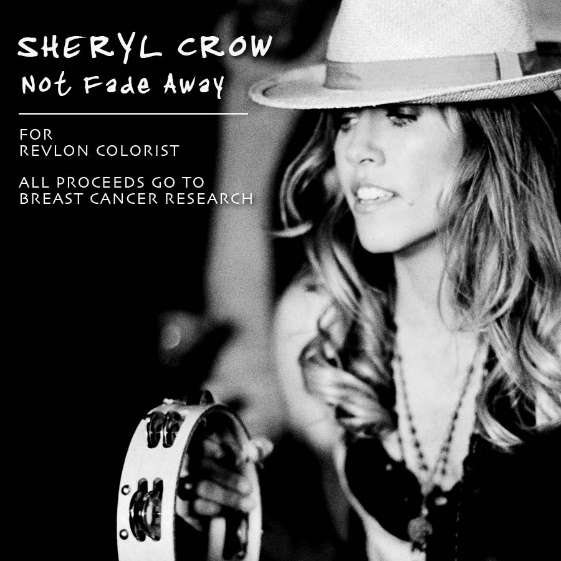
I could go through several editions of Lonnie’s Jukebox playing covers of “Not Fade Away.” According to the website Secondhand Songs, there are at least 148 versions. But I will stop now and finish this edition with two of Buddy’s classics.
“That’ll Be the Day” by Buddy Holly and the Crickets (1957). Buddy’s first hit and my introduction to his music when I was a junior at Van Horn High School.
“Oh Boy!” by Buddy Holly and the Crickets (1957). This was the A-side of the “Not Fade Away” single. “Oh Boy!” went to #10 on the charts, while the B-side became one of the most covered songs in rock ‘n’ roll. “Not Fade Away” did make the Billboard singles chart for the Rolling Stones (#48, 1964), Tanya Tucker (#70, 1979), Eric Hine (#73, 1981) and Sheryl Crow (#78, 2007).
“All of my life I been a-waitin’/Tonight there’ll be no hesitatin’/Oh Boy!”
Happy New Year
To close, Rita’s iPad photo of sunrise from our condo. Nicely complemented by the Plaza Lights on view from Thanksgiving to mid-January.
